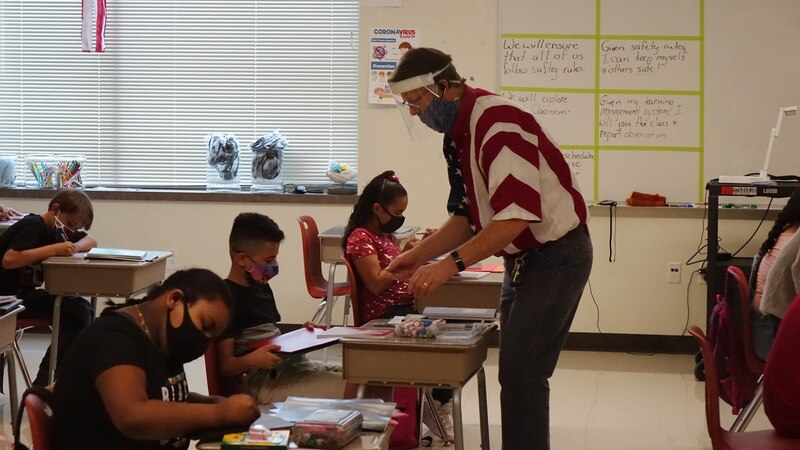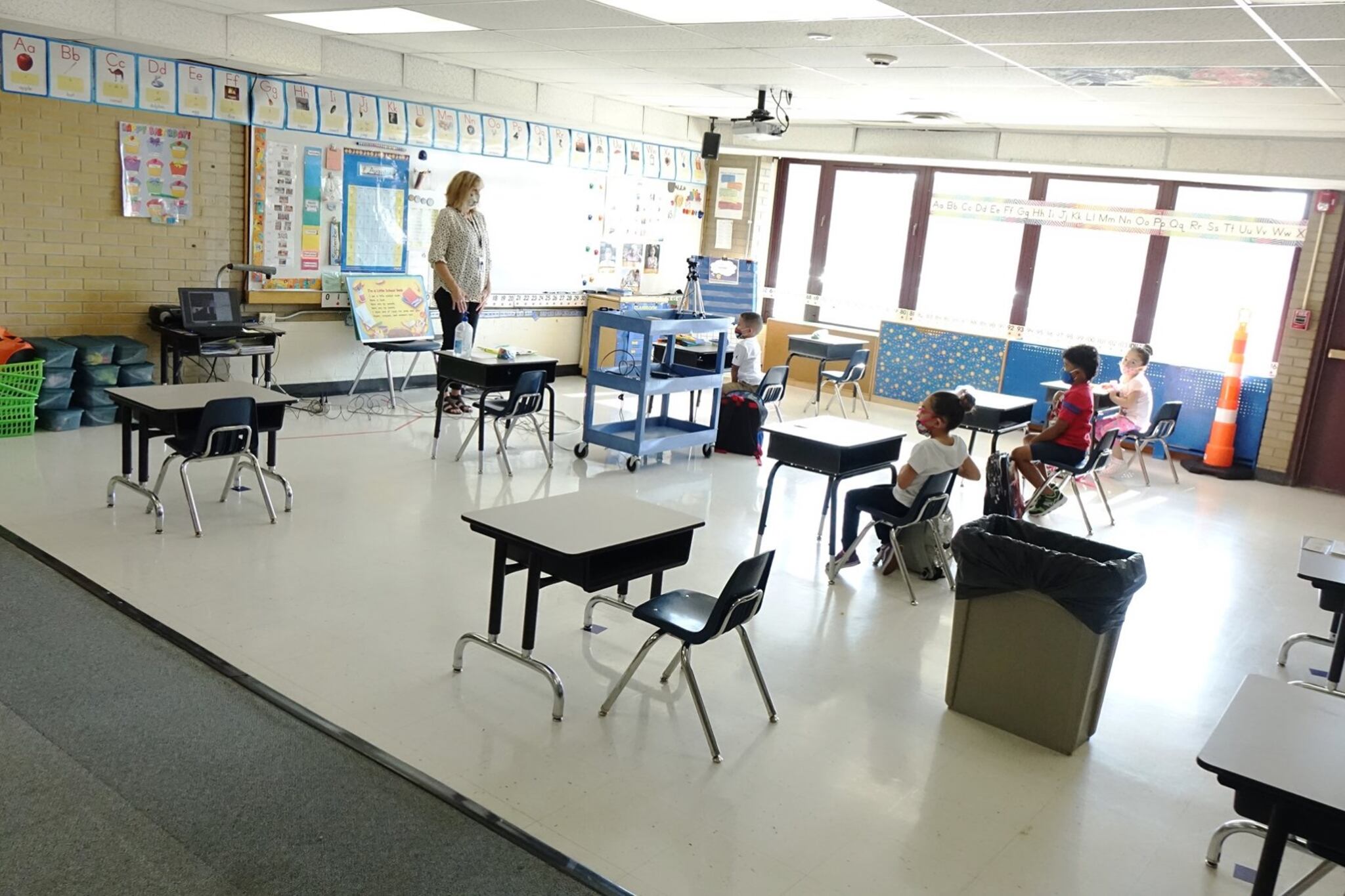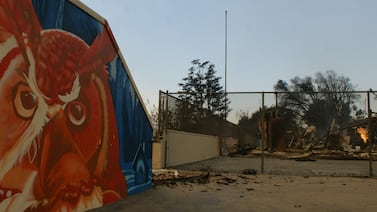Walking in her shiny blue shoes and holding mom’s hand, 5-year-old Leisha arrived at her first day of school in Sheridan on Monday.
Leisha was greeted with a temperature check at the door, part of the new normal of in-person schooling.
Students had to enter via various doors around the schools, depending on which class they were heading to. Parents lined up with elementary children outside the door, spaced 6 feet apart, then said goodbye as they handed off their children to teachers.
In the rush and excitement, Leisha walked up to her assigned door without a face mask, one of the requirements meant to keep students and staff safe in the midst of a pandemic.
The school had disposable masks available just for situations like this, but Leisha insisted that she and mom walk back to get the mask she had left in the car.
“She’s a little bit nervous, but she’s excited,” said mom, Tianna Lopez. “It’s a little bit atypical of a day.”
As some Sheridan schools started in-person learning on Monday, one of the first metro area districts to do so, teachers were still nervous, and some parents were too.
The rest of the Sheridan students started Tuesday. Around the state, almost half of all students are starting the school year online. Many of those districts that are starting in person are taking it slow, bringing students in one grade level at a time.
Elementary students in Sheridan are taking classes in person five days a week, and will be in classrooms with no more than 12 students. Middle and high school students will also go to school five days a week, but will only be in buildings for half days, as a way to reduce the number of people present at any given time. For students who choose remote instruction for the year, teachers who are teaching in person are broadcasting their classes live so students can get the same lessons at home.
On Friday, teachers asked to delay the start of school fearing that some of the details of the plan were inadequate. Earlier in the week as teachers were preparing to start the year, one teacher had tested positive for COVID. She tested negative later in the week, but for some, the case still underscored the unknown — the teacher had not had any symptoms — and the dangers that could be lurking as the school year begins.
Katie Biester, a high school social studies teacher, said that she felt safe in some ways. She liked that students stayed in one classroom while they were in the building, and only teachers moved from room to room.
But she was concerned that there hadn’t been enough time to figure out how teachers were to set up their classrooms to teach students tuning in from home at the same time as teaching those sitting in the room.
“We had a lot of tech issues,” Biester said. “A lot of us felt like either the kids online are missing part of the instruction or the kids in class are missing parts of the instruction. We sort of felt like we were being pulled in a lot of different directions.”
She said teachers are exploring different ways to try to make sure students are on equal footing regardless of where they are watching the lesson. For example, Wednesday, Biester is considering having students in the classroom also log in to the lesson through Zoom, “so they can all see each other.”
Monday morning, a couple of the parents walked up to Alice Terry Elementary to inform teachers that they had decided to keep their kids in remote learning after all.
Amelia Armendariz, a mother of three Sheridan students, said hearing of the teacher who tested positive made her change her mind about letting her children do in-person learning.
“I was going to send them to school,” Armendariz said. “But I’m very worried. There wasn’t a whole lot of information for me.”
Officials from Sheridan, a tiny urban district with a high number of families living in poverty and experiencing homelessness, have said previously that opening school buildings was important.
Tuesday they did not respond to requests for comment about how the year started.
Some of the families said they chose in-person learning because they aren’t concerned about COVID-19, especially its impact on kids. Several also said their children need special education services in person.

Erin Riggs, the mom of a kindergartener with special needs, said her son’s therapies are the reason she chose in-person learning.
As she dropped him off Monday morning, she said she was trying not to worry. She had worked with her son on keeping his mask on, washing his hands properly, and was reassured that peeking into the classroom, she had only seen “maybe seven desks.”
“It’s not normal, but I guess this is what we’re dealing with now,” Riggs said.
After school, her son reported that his first day of school was a success. “He said he had a lot of fun,” Riggs said.
Leisha too, reported a good first day of school.
“She didn’t think she was going to make a lot of friends but she did, so she was happy,” Lopez said.
And wearing a face mask until the end of the school day didn’t cause problems that kids reported to their parents.
“It literally, it just slipped her mind,” Riggs said. “I don’t think they think about it when they get in their element.”







